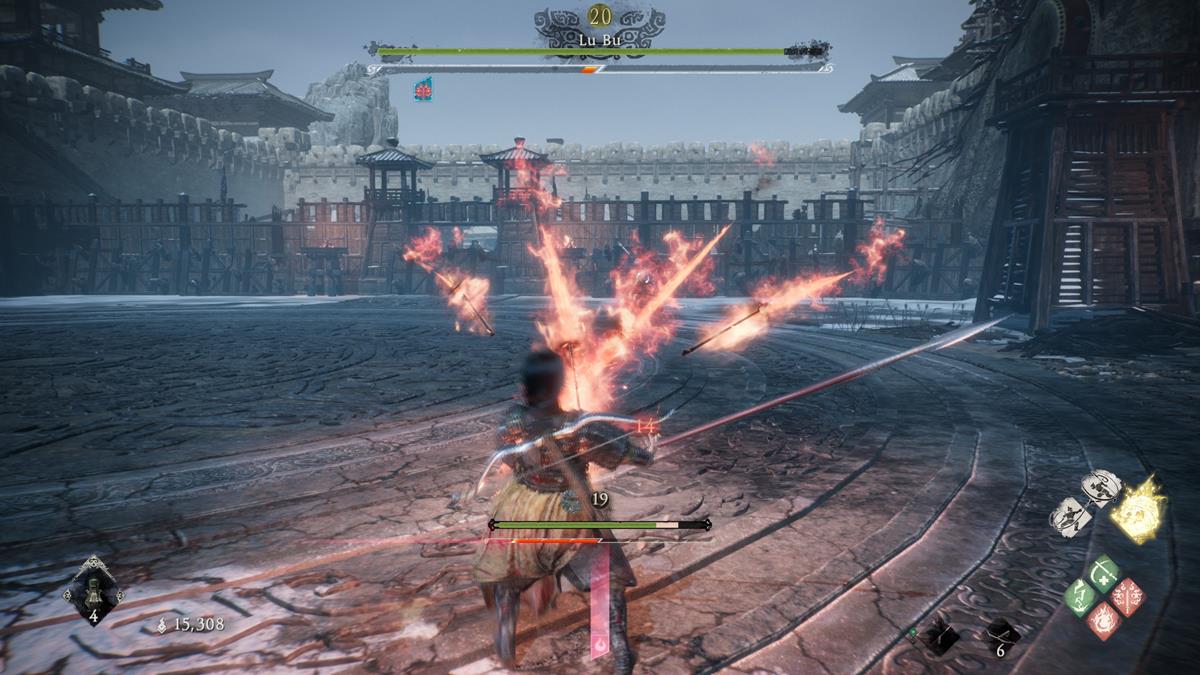If you’re coming to Wo Long: Fallen Dynasty from Nioh 2, you’re likely wondering what the main differences between the two games are. After all, they both share a developer and various gameplay systems. However, they’re very different games despite many similarities, so don’t expect to get the same kind of experience when all is said and done.
Note: For more, check out our Wo Long: Fallen Dynasty guides and features hub.
Wo Long and Nioh 2 – The key differences
Combat and parrying
The most obvious difference is likely in regards to the depth of combat. Nioh 2 is quite possibly the deepest Souls-like around, featuring complex, involved combat trees with many unlockable moves for each and every weapon. Additionally, weapons all have three stances.
In Wo Long, on the other hand, this is completely gone. Weapon have a default attack string and a stronger spirit attack by default. Special attacks are found randomly on weapons you pick up and cannot be freely assigned or removed. As such, the combat is much simpler. In addition, while Nioh 2 had parrying, combat wasn’t focused around the feature. Wo Long‘s combat is very much built with parrying as its focus, and the ability itself also has a far more lenient window. The difference is rather stark, as it plays more like Sekiro than Nioh. This does, however, give you a reason to try out lots of different weapons without having to worry about putting yourself at risk.
Nioh 2 has enemies that glow red and then unleash a powerful grab that needs to be dodged. Wo Long enemies use a similar attack, but it can be parried, which makes enemies far less dangerous, especially since you’re meant to parry most of these. While Nioh 2 used a stamina system akin to most other Souls games alongside the ability to restore stamina with a well-timed Ki Pulse, Wo Long does away with a stamina system altogether with the Spirit system.
Spirit never fades
The spirit system in Wo Long is comparable to the posture system in Sekiro. It’s about attacking enemies and parrying their moves to fill up the red part of their Spirit gauge. Once it’s filled, they enter Spirit Disruption which allows you to use a Critical Blow (what the glowing red attacks are called).
Overall, Wo Long is not as difficult than Nioh 2, as enemies are less dangerous and bosses can often be beaten in one or two goes versus needing to carefully memorize every aspect of their movesets. You’ll also often have AI helpers showing up as soon as you enter a mission.
These helpers can be easily sent away, but they’re one of the key factors that makes Wo Long much more forgiving than Nioh 2. You’ll sometimes even have two of them with you, which can make the already easier boss fights that much easier. These helpers will obviously aggro a lot of the enemies, which extends to bosses. Even if you don’t have any with you, you can use a consumable to summon up to two of them to make things easier, if you so wish. Nioh 2 players will simply not find the same level of challenge.
Then there’s the Morale system. It’s based around Fortitude ranks, which indicate how much damage is done and how high resistance to said damage is. You start main missions at rank zero and increase this rank by planting flags and defeating enemies. But your rank gets lowered upon death and taking hits from enemy Critical Blows. You can make enemies and bosses that much easier to take down by grinding your rank higher than theirs, so it’s yet another crutch for players to lean on if they’re having trouble. Wo Long is a much more approachable experience by a wide margin.
The healing, and world map
There’s also a big difference in how you obtain permanent healing items. Nioh 2‘s healing is dependent on finding small creatures in each region. The more you find, the more items you spawn with. But each region starts you over from the bare minimum. Wo Long handles healing just like a Souls game. You’ll find two items: one that permanently increases your capacity, and another that permanently increases how much healing you get from their use. These items persist regardless of where you go, so you don’t have to worry about hunting creatures down just to stay alive.
Instead of regions, the game is divided into chapters, but you’ll still use a world map to freely select which mission or side mission you’d like to travel to, complete with each mission having set drops that you can farm if you so desire. This is the closest similarity the two games share. Wo Long also has a jump button, so you can use a critical blow on enemies that you jump above, as well as platform to reach higher ground. It adds up to a very different experience that doesn’t scratch the same itch.
That does it for most of the main differences between Nioh 2 and Wo Long. They’re clearly cut from the same cloth, but Wo Long isn’t meant to provide the same kind of experience as the other. If you were put off by Nioh 2‘s difficulty and complexity, Wo Long will offer a much softer, simpler experience. While this is good news for people who don’t want as much challenge, Nioh players will likely walk away somewhat bored, even if this game does have some tough bosses of its own.
Wo Long: Fallen Dynasty is available on Steam and the Xbox marketplace.











Published: Mar 14, 2023 05:00 pm